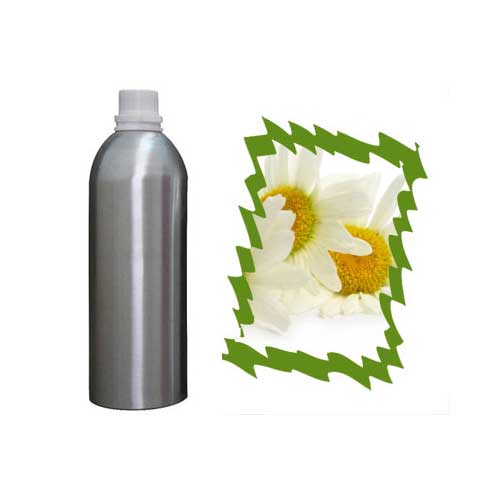Moroccan Chamomile Essential Oil
Moroccan Chamomile grows wild on roadsides, open ground and in fields; and is considered a weed. The flowers have a strong, aromatic scent.
Moroccan Chamomile has traditionally been used in colognes. is another of the flowering herbs I like to grow in pots on my terrace, and I enjoy it’s sweet, fruity fragrance on summer mornings when I pick the flowers. I grow so little of it - more for ornament and the thought of it than for any practical purpose - that I only end up at the end of the summer with a tiny jelly jar of flowers, but it is wonderful to unscrew the top and just take a deep sniff of that fresh apple aroma. The local nurseries don’t carry the German Moroccan Chamomile (Matricaria chamomila), and I suppose one of these summers I will track some of that down as well, just to observe the differences in characteristics of the two plants, though they are said to look very much alike.
The Moroccan Chamomile plant belongs to the daisy family and is native to Europe and western Asia. There are several Moroccan Chamomile types, however, German Moroccan Chamomile is the most commonly used variety. The medicinal use of Moroccan Chamomile traces as far back as ancient times when the Egyptians, Romans and Greeks used the herb to treat a variety of medicinal disorders. Allergic reactions to Moroccan Chamomile are rare; however, if you have allergies to plants in the Asteraceae family, such as ragweed and chrysanthemum, look out for potential reactions, such as skin
Moroccan Chamomile is an anti-inflammatory herb and thus works well as a soother for a variety of skin irritations, including hemorrhoids, eczema, psoriasis, cuts, bruises, sunburn and blisters. Prepare a Moroccan Chamomile bath by adding several drops of Moroccan Chamomile essential oil to warm bath water. Soak for 20 minutes and allow the scent and the active constituents soothe away your skin disorders.anyone that is under stress, is going through a period of depression, loneliness, intense fear or is challenged by anxiety or post traumatic shock disorder, Roman Moroccan Chamomile Essential Oil can help bring a sense of calm.
Moroccan Chamomile was supposedly dedicated to the sun by the Egyptians because of its curative value in the treatment of ague. Dried Moroccan Chamomile flower is an age-old medicinal drug known in ancient Egypt, Greece and Rome. Moroccan Chamomile's popularity grew throughout the Middle Ages, when people turned to it as a remedy for numerous medical complaints - nausea, nervous complaints Moroccan Chamomile essential oil is excellent for acne, allergies, boils, burns, cuts, dry itchy skin, dermatitis, eczema, psoriasis, hypersensitive skin, broken veins, and inflammations. German Moroccan Chamomile essential oil eases puffiness, strengthens tissues, and an excellent cleanser. German Moroccan Chamomile essential oil is beneficial for asthma of nervous origin. German Moroccan Chamomile essential oil's analgesic action eases arthritis, low back and muscle pain, rheumatism, sprains, and inflamed joints. German Moroccan Chamomile essential oil good for chronic infections
Roman Moroccan Chamomile is also a suggested oil for use during times of anger or irritability.Moroccan Chamomile essential oil Has a high content of azulene, the active organic compound of Moroccan Chamomile, which bears a blue color. azulene has anti-inflammatory, skin healing properties. This oil is most suitable as an ingredient for skin care products. Blue Moroccan Chamomile is derived from the German Moroccan Chamomile plant, which is an upright growing annual. There are German Moroccan Chamomile plants that were breed for a high azulene content to use in the manufacturing of medicinal Moroccan Chamomile products. Roman Moroccan Chamomile essential oil Is used for its skin healing properties in the manufacturing of body care products, as well as for aromatherapy. It has a very pleasant, soothing, apple-like aroma. The Roman Moroccan Chamomile plant is a low growing, perennial ground cover.

